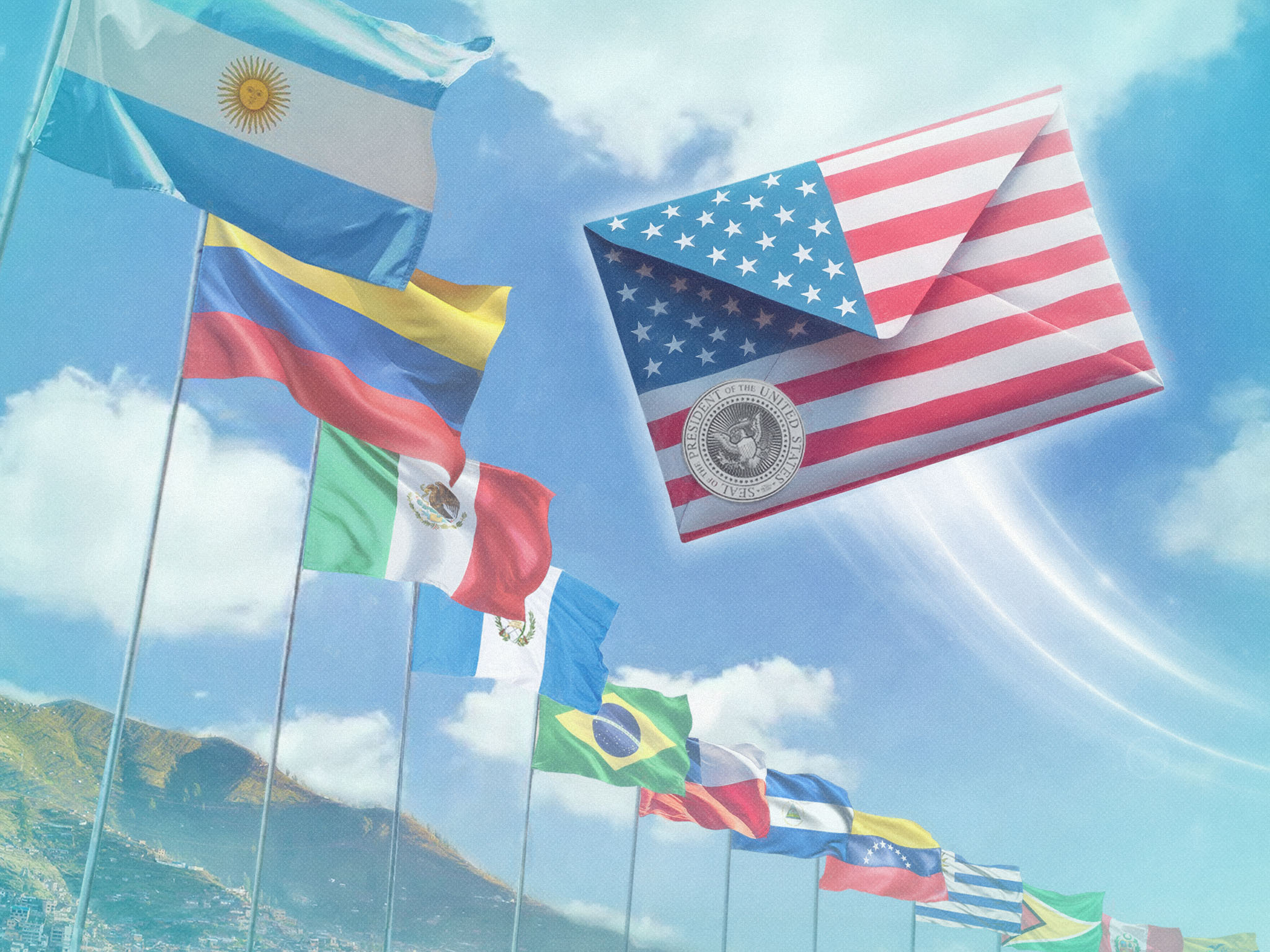The announcement last week that the US would adopt a regime of “reciprocal tariffs” sent global markets plummeting, but behind the chaos was a silver lining—or even a strategic opening—for Latin America: the administration of President Donald Trump sees the region as a key beneficiary of the economic reset it’s trying to enact.
“Today is a great day for America, and it’s a great day for the Americas,” Mauricio Claver-Carone, the US Special Envoy for Latin America, said at a conference in Miami just one day after the measures were first announced on April 2. He noted that only three countries on the continent—Venezuela, Nicaragua and Guyana—had received tariffs on top of a 10% baseline that applies to all imports, and he said that would result in an edge over other emerging economies such as those in Southeast Asia.
“Latin America has always been the laggard of emerging markets,” Claver-Carone said. “Today, if you’re an emerging markets investor, you’re like, ‘Hey, that might be where I want to focus in now.’” The top diplomat for the region added that the administration’s primary focus was on the re-industrialization of the US, which would make all of the Americas a “winner.”
Indeed, while investors around the world focused on the high tariffs being applied to factory powerhouses like Bangladesh (37%), Cambodia (49%) and Vietnam (46%)—all of which have in recent years emerged as key geographies for manufacturers seeking to hedge the risk of a possible crackdown on China—Latin American leaders were quick to jump on the developments and make the most of a chance to further “friendshore” US supply chains closer to home.
New trade negotiations
Argentine President Javier Milei, a staunch Trump ally, unsurprisingly wasted no time in jetting up to Florida, where he told a crowd at Mar-a-Lago that he’s seeking a broader trade agreement with the US. But the most interesting comments on the new tariffs came from a leader at the other end of the ideological spectrum who has frequently clashed with the Trump administration: Colombian President Gustavo Petro.
“Latin America, including Colombia, benefits from Trump’s tariff policy…if we can produce those goods more cheaply, now is the time to export there,” Petro wrote in a late night post on X, adding that Colombian businesses should seize the moment and focus on agriculture and industrial exports. He also called on the country’s central bank to lower interest rates so that new export capacity could quickly be built.
“By deciding to impose tariffs by geographic area and not by product type, Trump allows us to improve our competitive positions on a Latin American scale,” Petro continued. “Now is the time to drive a shift in the export matrix toward higher levels of value-added generation.”
Elsewhere in the Americas, Bernardo Arévalo, Guatemala’s center-left leader, said that the Central American country is already holding new trade talks with the US. “We should remain calm and act with the confidence that this challenge can turn into an opportunity for our country,” he said during a press conference on Monday. Even Mexican President Claudia Sheinbaum was quick to praise the fact that the latest US tariff measures had spared the neighboring country from any additional increases and left it with “preferential conditions” when compared to others. Brazilian President Luiz Inácio Lula da Silva has also taken a somewhat measured stance, with some predicting that the South American giant may be one of the biggest beneficiaries of the new status quo. While no one likes tariffs, regional leaders across the political spectrum seem to be united in a sense that there could be opportunity beyond the storm. Perhaps the most skeptical position so far has come from Chilean President Gabriel Boric, who said the country would respond to the “ongoing tariff war” by forming a high-level committee for its critical minerals strategy amid a market diversification policy that’s included agreements and talks with the EU, India and Brazil.
Markets hold their own
Amid the broader market selloff that’s shaved 7% off the S&P 500 over the past month, the S&P Latin America 40 index has only declined 2.3% over the same period. Brazil’s Bovespa (BOVA11) index, meanwhile, is actually up 1.7%. Perhaps the best thing going for the region’s economies is that the US actually has trade surpluses with most of them, and that means they could theoretically increase exports by a large margin without drawing the deficit scrutiny that has fallen on heavyweights like France, Germany, India and Japan.
“Let’s realign it to the favor of all of you Americans, all of us Americans, and put America first, and the Americas as a secondary benefit to that,” Claver-Carone told the Miami audience last week about the administration’s vision for a revamped global order. “And the rest of the world, you either play fairly or you don’t play.”
Governments across the continent seem to have heard the message loud and clear, and their measured and careful responses have brought a uniformity that’s not typically seen in the fragmented region. Investors, of course, will need policy certainty before they’ll likely commit to any major projects, and it also remains to be seen whether the US will be willing to step up to replace China as a major funder of infrastructure works. As the age-old maxim goes, actions speak louder than words. If the US is serious about bringing the broader Americas into its America First party, it will need to do more than just send out a glossy invitation.




Comments